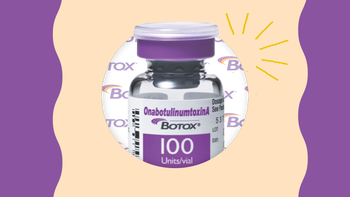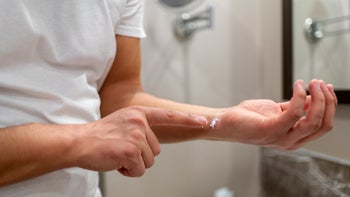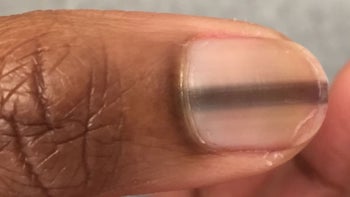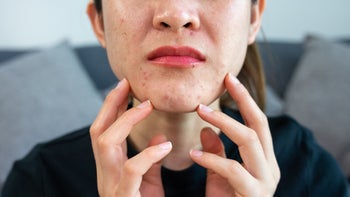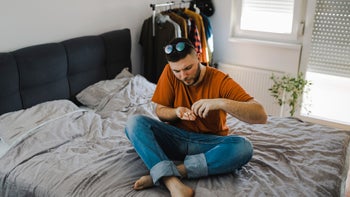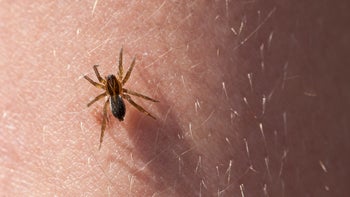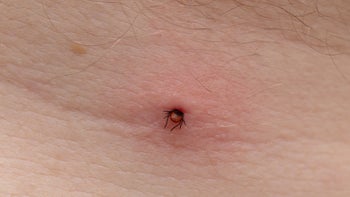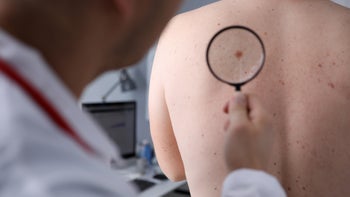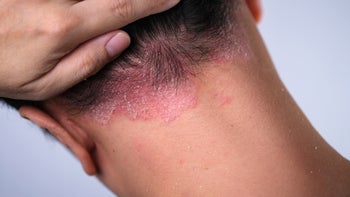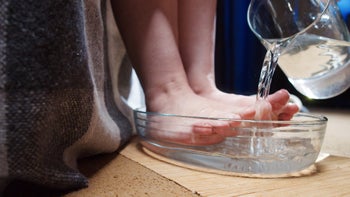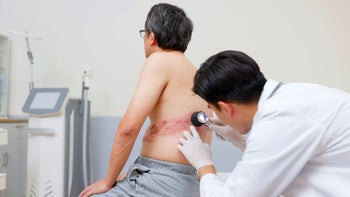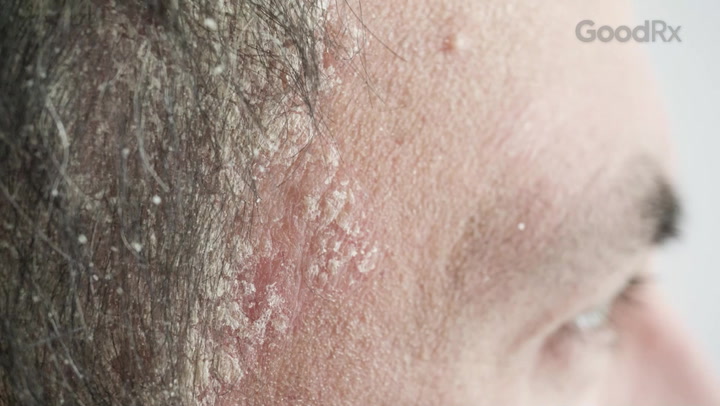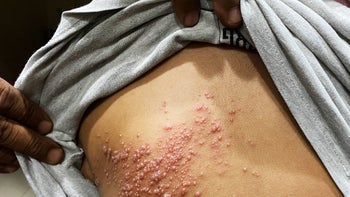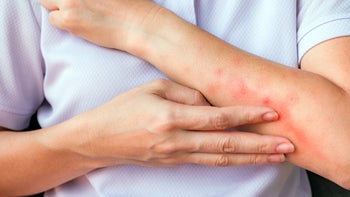
Recommended Treatments to Get Rid of Keloids
Key takeaways:
A keloid is a type of scar that forms as a wound heals.
Keloids aren’t dangerous, but they can be bothersome and affect your self-esteem.
There is no way to prevent keloids from forming, but there are treatments that can help minimize their size and appearance.
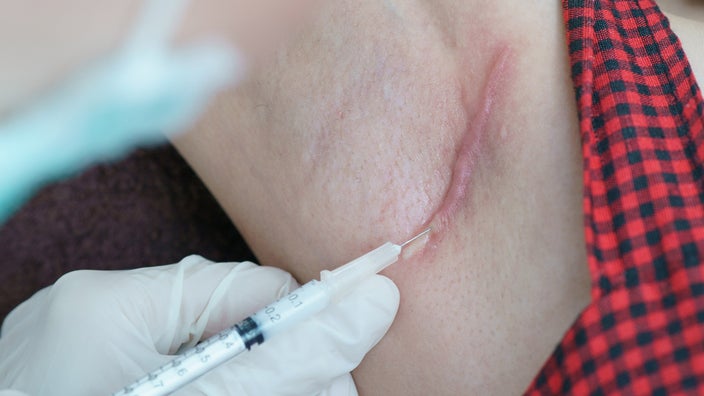
Keloids have been distressing people for millennia — in fact, they were first described by people in ancient Egypt. Well into the 19th century, healthcare providers confessed to feeling helpless when trying to treat them. Thankfully, nowadays there is much more that can be done to help minimize keloid size and appearance.
What are keloids?
Keloids are growths of skin tissue that happen naturally during the healing process after skin is injured from wounds. In other words, they are a type of scar. Although not dangerous, they can be upsetting, especially if they are very large or located in a delicate area like the face.
Depending on where it is, a keloid can also interfere with the skin’s function, making it hard to do things like stretch or bend. Keloids can also be painful and itchy.
Keloids can occur anywhere on the body but are more likely to form on:
Arms
Chest
Shoulders
Head
Ear lobes
Keloids don’t usually form on the palms, soles, eyelids, or genitals. An unusual scar in these areas should be checked by a healthcare provider right away.
What causes keloids?
Keloids most often form on scars from surgery, but they can also form as skin heals from:
Burns
Acne
Insect bites
Certain types of injuries
A keloid forms slowly and can grow over a period of months or years as a wound heals. Most keloids will start to appear within a year, though. If a regular scar has already developed, it won’t turn into a keloid.
What do keloids look like?
Unlike other scars, keloids extend beyond the borders of the original injury, which means they can grow quite large. Keloids may change over time as they grow, but, in general, they:
Are raised above the level of the skin
Are usually raised, but can be round if they are on the earlobe
Feel firm and rubbery, or soft and doughy
Are red, pink, or purple and may darken over time
Are sometimes itchy and painful
Why do keloids form?
It’s not clear why keloids form. As a wound heals, the body normally makes a scar by laying down collagen and new skin tissue.
Scientists believe that, in some people, tiny substances normally produced inside a wound to direct the healing process get overactivated. This leads to too much collagen and tissue production, which forms a keloid.
Some people are more likely to form keloids than others, especially those who:
Already have keloids
Have family members who form keloids
Have darker skin
While younger people are more likely to form keloids, people of all ages can be affected.
Do keloids go away on their own?
Keloids rarely disappear on their own. They may flatten and soften over time, but they don’t usually go away completely. For some people, these natural changes are enough to make keloids look better, but, even so, the skin never looks the same as before.
Can you prevent keloid development?
The only way to truly prevent a keloid is to keep from being injured, and that’s impossible in daily life. But there are some things you can do to decrease the risk of developing keloids.
You might want to avoid anything that can pierces the skin, like:
Elective surgeries
Piercings
If you have a wound from a burn or surgery, healthcare providers can apply a dressing made of silicone gel — a process called “silicone gel sheeting.” This might not keep keloids from forming, but it can decrease the size of the keloids. The dressing helps by keeping the wound moist and limiting skin stretching.
Can you treat keloids?
Keloids can be treated with:
Surgery
Medications
Silicone dressing sheets
Laser therapy, as well as surgery
Treatments might not remove the keloid completely, but they can make the keloid smaller and less noticeable. Studies show that using a combination of these options works better than using just one. Success rates vary from study to study, so there’s no set recipe for success. You can work with your healthcare provider to determine which options will be best for you.
Surgery
You can have a keloid removed with surgery, but many times the keloid will grow back unless you use additional therapy. Most of the time, people will have a keloid removed with surgery and then use medication injections, silicone gel sheeting, or other medical procedures to keep the keloid from growing back.
Medical procedures
Medical procedures to treat keloids include:
Cryotherapy
Radiation therapy
Laser therapy
These therapies are combined either with surgery, medication, or silicone gel sheeting.
What medications can be used to treat keloids?
There are several medications that can be used to treat keloids. These medications are either injected into keloids to shrink them or applied directly on the keloid.
Common medications for keloid treatment include:
Steroids like triamcinolone
5-fluorouracil (5-FU)
Retinoic acid
Verapamil
These medications can be used alone or combined with other options to treat keloids.
Are there any natural ways to treat keloids?
There aren’t many natural remedies for keloids. An over-the-counter medicine made of onion extract called Allium cepa works well for some people. Like other treatments for keloids, it works best when used with other therapies.
The bottom line
Keloids are a type of scar. While not dangerous, keloids can be uncomfortable and make some people feel self-conscious. Fortunately, keloids are a major area of medical research, and new therapies are constantly being developed. Keloids can be treated with surgery, medications, dressings, and other medical treatments.
References
American Academy of Dermatology Association. (n.d.). Keloids: Signs and symptoms.
Berman, B., et al. (2017). Keloids and hypertrophic scars: Pathophysiology, classification, and treatment. Dermatologic Surgery.
Betarbet, U., et al. (2020). Keloids: A review of etiology, prevention, and treatment. The Journal of Clinical and Aesthetic Dermatology.
Carswell, L., et al. (2022). Earlobe keloid. StatPearls.
Ekstein, S. F., et al. (2020). Keloids: A review of therapeutic management. International Journal of Dermatology.
Hsu, K. C., et al. (2017). Review of silicone gel sheeting and silicone gel for the prevention of hypertrophic scars and keloids. Index Wounds.
Lu, W. S., et al. (2015). Clinical and epidemiological analysis of keloids in Chinese patients. Archives of Dermatological Research.
Ojeh, N., et al. (2020). Keloids: Current and emerging therapies. Scars, Burns & Healing.
Smith, O. J., et al. (2014). The natural history and spontaneous resolution of keloid scars. Journal of Plastic, Reconstructive & Aesthetic Surgery.




